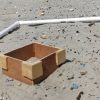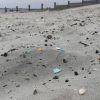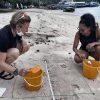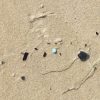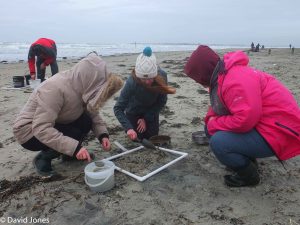 One of the most important things about any citizen science research project is ensuring that the results you have are consistent and accurate. The problem with scientific research into microplastics is that it is so new there is no real standardised measurement process. Put simply, there are lots of people around the world using their own methods. We wanted to find out it the results were comparable.
One of the most important things about any citizen science research project is ensuring that the results you have are consistent and accurate. The problem with scientific research into microplastics is that it is so new there is no real standardised measurement process. Put simply, there are lots of people around the world using their own methods. We wanted to find out it the results were comparable.
The methodology we developed for the Big Microplastic Survey came about for a number of reasons. The sampling itself was a distillation of methods that had previously been used and recorded in academic literature. However, this project was different because it was going to rely on volunteers to collect the data. Experience of citizen science research has shown that projects need to meet certain criteria. They need to ensure that there is an element of learning for the participant and there needs to be a contribution to science.. However it also needs to be accessible in terms of time, money, equipment and effort. The result is a process that takes 30 minutes, can be done anywhere with suitable substrate and uses equipment that you can find in your household. But is our sampling method getting similar results to all the others? And if not, which one is necessarily the ‘right’ one.
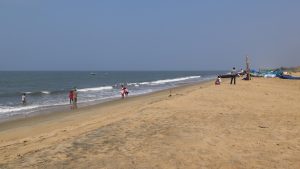 We set about comparing our sampling method with two others being used to see if the results were the same. This involves using different methods at the same time in the same place on the same day, so it is important to have enough volunteers to do that. In the UK we undertook comparison surveys in three locations and that gave us some great data which might have been enough. However, when our friends in Cochin University in India offered to run a similar study we jumped at the chance. They also ran the study on a number of beaches.
We set about comparing our sampling method with two others being used to see if the results were the same. This involves using different methods at the same time in the same place on the same day, so it is important to have enough volunteers to do that. In the UK we undertook comparison surveys in three locations and that gave us some great data which might have been enough. However, when our friends in Cochin University in India offered to run a similar study we jumped at the chance. They also ran the study on a number of beaches.
This comparison study is great for a couple of reasons. First of all if there is no difference it would improve the efficacy of existing data and allow data to be shared more easily. But secondly and probably most importantly, it was a collaborative effort and that is the only way that any of us are going to solve the worlds environmental issues. We are now crunching the numbers but we are also looking forward to working with our colleagues in Cochin in the future.


